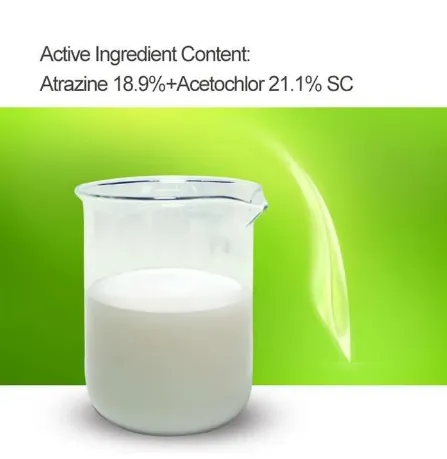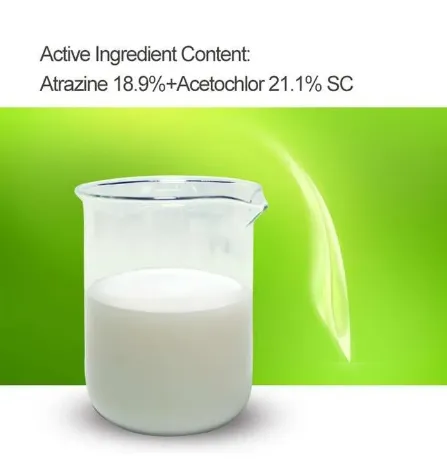


Best Practices for Environmentally Responsible Atrazine Use

Atrazine herbicide is a widely used solution for controlling broadleaf and grassy weeds in crops such as sweet corn and field corn. It is also sometimes used for selective weed control in lawns and turfgrass. Additionally, 2,4-D and atrazine are often combined for more effective weed management. While atrazine for corn remains a key agricultural tool, its environmental impact has raised concerns. By following best practices, farmers and landowners can use atrazine herbicide effectively while minimizing risks to the environment.
Using Atrazine for Sweet Corn with Sustainable Methods
Atrazine for sweet corn is highly effective in controlling weeds that compete with crops for nutrients, water, and sunlight. However, improper application can lead to runoff into water sources. To use atrazine for sweet corn responsibly, farmers should apply it at the recommended rate and avoid excessive spraying.
Another important practice is to apply atrazine herbicide during dry weather when there is no immediate rainfall forecast. Heavy rains can wash atrazine into nearby water bodies, leading to contamination. Farmers should also consider using conservation tillage techniques, such as cover crops or buffer strips, to reduce soil erosion and herbicide runoff.
Safe Application of Atrazine for Lawns and Residential Areas
Although atrazine for lawns is used to control weeds in turfgrass, homeowners must exercise caution when applying it in residential areas. Excessive or improper use can damage desirable plants and contaminate groundwater. When using atrazine for lawns, it is best to apply it in targeted areas rather than broadcasting it over the entire lawn.
Timing is crucial for effectiveness and safety. The best time to apply atrazine herbicide on lawns is during early spring or fall when weeds are actively growing. Avoid applying it near storm drains, sidewalks, or areas prone to water runoff. Additionally, always follow the recommended application rates to prevent overuse, which can lead to soil contamination.
Optimizing Atrazine for Corn While Protecting the Environment
Atrazine for corn is one of the most common uses of this herbicide, helping farmers maintain high yields by reducing weed competition. However, to ensure sustainable farming, it is essential to apply atrazine for corn with precision. Using modern spraying equipment with calibrated nozzles can help reduce waste and prevent excessive application.
Rotating herbicides is another effective strategy to prevent weed resistance and reduce dependence on atrazine herbicide. By incorporating other weed control methods, such as mechanical cultivation and crop rotation, farmers can minimize the environmental impact while maintaining effective weed control.
Combining 2,4-D and Atrazine for Effective Weed Control

The combination of 2,4-D and atrazine is a popular choice for broad-spectrum weed control. 2,4-D and atrazine together enhance each other’s effectiveness, making them useful for controlling a variety of tough weeds. However, this combination should be used carefully to prevent herbicide drift and contamination of sensitive areas.
To minimize risks, always follow label instructions when mixing 2,4-D and atrazine. Apply them under calm weather conditions to prevent drift onto non-target plants or water sources. Using buffer zones around fields and avoiding applications near waterways can further protect the environment.
By following these best practices, farmers and homeowners can use atrazine herbicide effectively while ensuring environmental safety. If you’re looking for high-quality atrazine for corn, atrazine for lawns, or 2,4-D and atrazine combinations, visit our website for reliable agricultural solutions.
Atrazine Herbicide FAQs
Is atrazine safe for use on sweet corn?
Yes, atrazine for sweet corn is commonly used to control weeds, but it should be applied at the recommended rates to prevent crop damage and environmental contamination.
Can I use atrazine herbicide on my lawn?
Yes, atrazine for lawns is effective for weed control in certain turfgrass varieties. However, it should be applied carefully to avoid damaging desirable plants and contaminating nearby water sources.
How can I prevent atrazine runoff into water sources?
To prevent runoff, apply atrazine herbicide during dry conditions, avoid spraying before heavy rainfall, and use conservation practices like buffer strips and reduced tillage.
Why do farmers mix 2,4-D and atrazine?
Farmers combine 2,4-D and atrazine to improve weed control efficiency. The combination targets a broader range of weeds and helps prevent resistance buildup.
Where can I buy high-quality atrazine herbicide?
You can find premium atrazine for corn, atrazine for lawns, and 2,4-D and atrazine products on our website, ensuring reliable and effective weed control solutions.
-
Uncover the Benefits of Sodium ChlorateNewsJun.24,2025
-
Sodium for Sale: Your Essential ResourceNewsJun.24,2025
-
Raw Materials in Chemical IndustryNewsJun.24,2025
-
Potassium Hydroxide: Versatile Solutions for Your NeedsNewsJun.24,2025
-
Organic Pesticides and Chemical Raw Materials: Building a Sustainable FutureNewsJun.24,2025
-
Discover Premium Chlorine Tablets TodayNewsJun.24,2025
-
Zinc for Sale: Your Essential ResourceNewsJun.04,2025


















